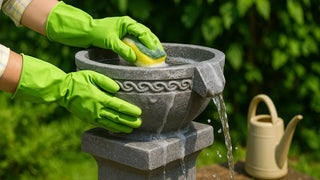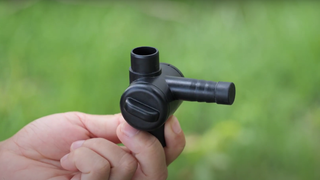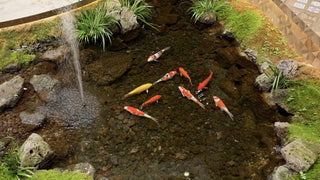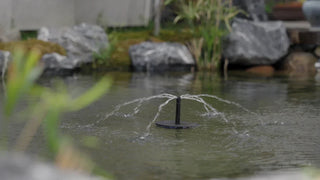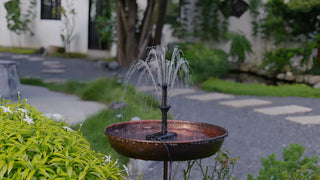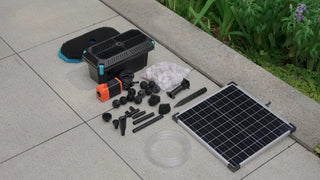
Nothing is more maddening than venturing out into the great outdoors into fresh air and listening for the sound of moving water, only to be greeted by silence. You look at the basin--water there. The sun is shining. But your fountain does not operate. It's the crisis of hopelessness for many homeowners: Is it broken? Do I have to replace the pump? The reality is, most issues have straightforward answers. With a little simple fountain trouble-shooting, you'll be able to get things up and running usually in minutes, not days.
This manual leads you through common problems, pump and power inspections, maintenance guidelines, and when new components need to be replaced. We will also add Poposoap's post-purchase support and accessories which make it simple to keep your fountain healthy. If your garden fountain is not working, this is how to approach the repair calmly and effectively.
1. Normal Troubleshooting Steps
When the fountain won't work, the first thing to try is always the easiest: breathe and work from the basics.
- Check water level: Low water is the most common cause of pump failure. In case the pump is not submerged in water, it will suck up air rather than water. Top up the basin so the pump is thoroughly submerged.
- Check for clogs: Leaves, pollen, or fine particles have a tendency to collect around the intake. If the pump whines but won't pump water, a clog is likely the cause. Remove the front cover and clean out the impeller cavity.
- Check nozzles: Decorative nozzles occasionally get clogged with algae or mineral buildup. Remove them and soak under warm water to restore water flow.
- Check for kinks: If your fountain has tubing, ensure there are no pinches or bends in the water path.
The vast majority of the time, taking these quick steps will repair the issue. Regular monitoring of water level and intake screens prevents most stalls.
2. Power Supply and Pump Testing Methods
When after unclogging and adding water, the fountain still fails to turn on, then the next action is to check whether the pump is powered.
- For solar fountains: Place the panel directly in sunlight. Any shadowing, even slight, will prevent operation. Rinse the panel surface with a wet cloth, removing dust and pollen that reduce efficiency. Poposoap solar panels are very cable long, so there is position liberty--max this out by placing the panel in the best sun location.
- For battery-operated ones: Ensure the battery is well stored charged. Running the fountain periodically for a few hours under sunlight might restore functionality.
- For AC fountains: Test the outlet by trying it with another piece of equipment to plug in. Check extension cords or adapters for wear.
To even test the pump, remove it from the basin, place it in a clean water bucket, and plug it directly into the power source. If it's functioning here, then something else in the fountain system is broken (i.e., tubing or nozzle). If not, the pump might need more targeted maintenance--or replacement.
3. Cleaning and Maintenance Suggestions
Most garden fountain repairs simply come down to routine maintenance. Pumps are small units that need to be cleaned periodically to function well.
- Weekly water check: Refill as needed, especially in hot weather when evaporation is highest.
- Monthly pump flushing: Remove the pump housing cover, remove the impeller, and flush pieces by clean water. Never use chemicals or soap.
- Collector upkeep: The solar systems have transparent collectors. Clean with a soft, gentle cloth to prevent dust accumulation.
- Nozzle maintenance: Soak jammed nozzles in a water-vinegar mixture to dissolve lime deposits.
- Seasonal shutdown: In cold climates, bring pumps inside over winter to avoid ice damage.
Poposoap designs their fountains and pumps to be easily disassembled, making it possible for anyone who is a beginner to accomplish this without additional tools. Taking a little caution for a few minutes will prevent hours of frustration later.
4. Poposoap After-Sales Tips
Shopping with Poposoap comes with the advantage of after-sales service and accessories available to extend product life.
- Customer service: Poposoap has troubleshooting advice for all solar fountains, pumps, and filters on their website and social media.
- Spare parts and accessories: Spare impellers, filter pads, and nozzle kits, in the event of individual components wearing out.
- Protection filter boxes: These give additional protection to pumps, especially in foliage gardens, reduced clogging and more extended service times.
- Extension cables: Shield panels and position them for maximum sun, beyond pet reach or sheltered corners.
Having access to help is assurance that even though your fountain will not be running today, solutions are within reach.
5. Replacing Parts
No matter the care, pumps eventually wear out. Signs that it is time to replace them are:
- Persistent noise: If the pump still rattles after cleaning, the impeller may be destroyed.
- Low flow after thorough cleaning: A weak motor will be indicated through reduced output.
- Repeated shutting down: Pumps shutting off after a short period of running are probably overheating or electrically failing.
- Visible damage: Cracks in the housing or frayed cords make it best to replace rather than attempting to fix.
For solar fountains, panels will last longer than pumps. Replacement of the pump alone will usually get the system running again. Poposoap offers single pumps compatible with their fountain kits, making it simple to upgrade.
Conclusion
A broken fountain need not ruin your day. The majority of problems are minor and fixable: refilling water, wiping off debris, or examining power supply. Quick cleaning and quick pump test normally get your feature working again within minutes. When parts do fail eventually, Poposoap provides available spares and accessories, so a complete replacement is rarely necessary.
By following these fountain troubleshooting steps and investing a little care, your water feature will stay reliable season after season. And if your garden fountain won’t run again in the future, you’ll know exactly where to start for a quick, effective garden fountain fix.





